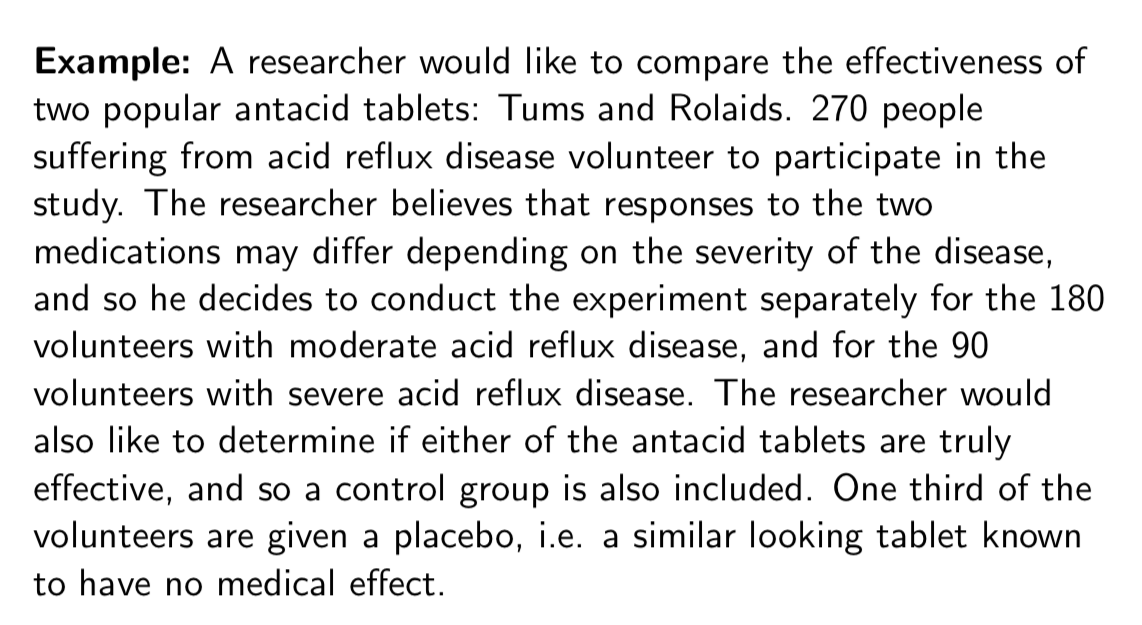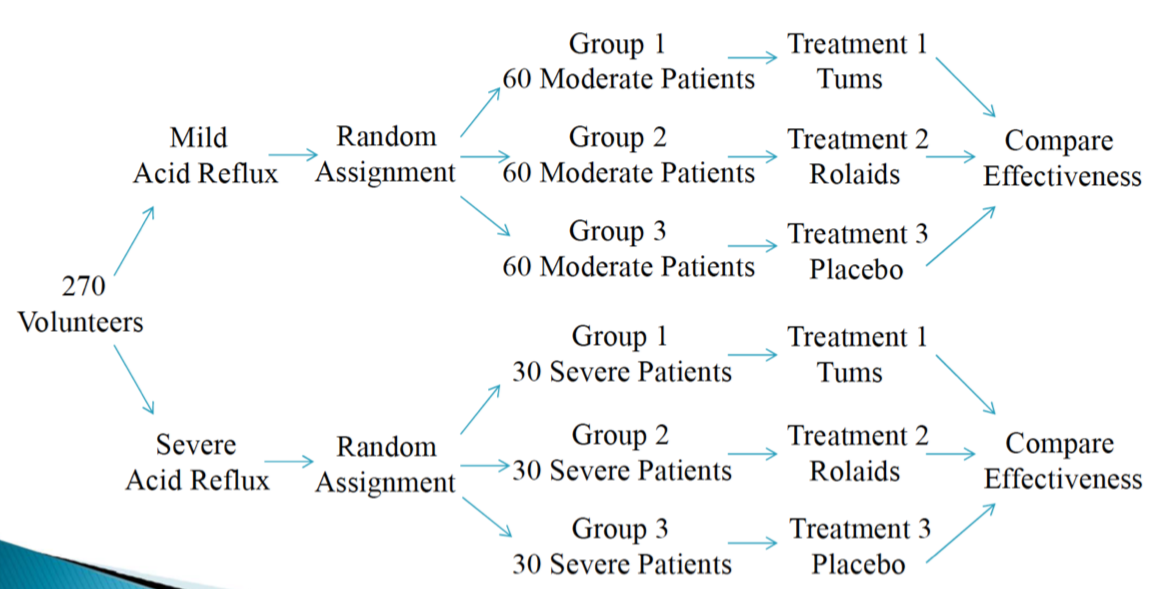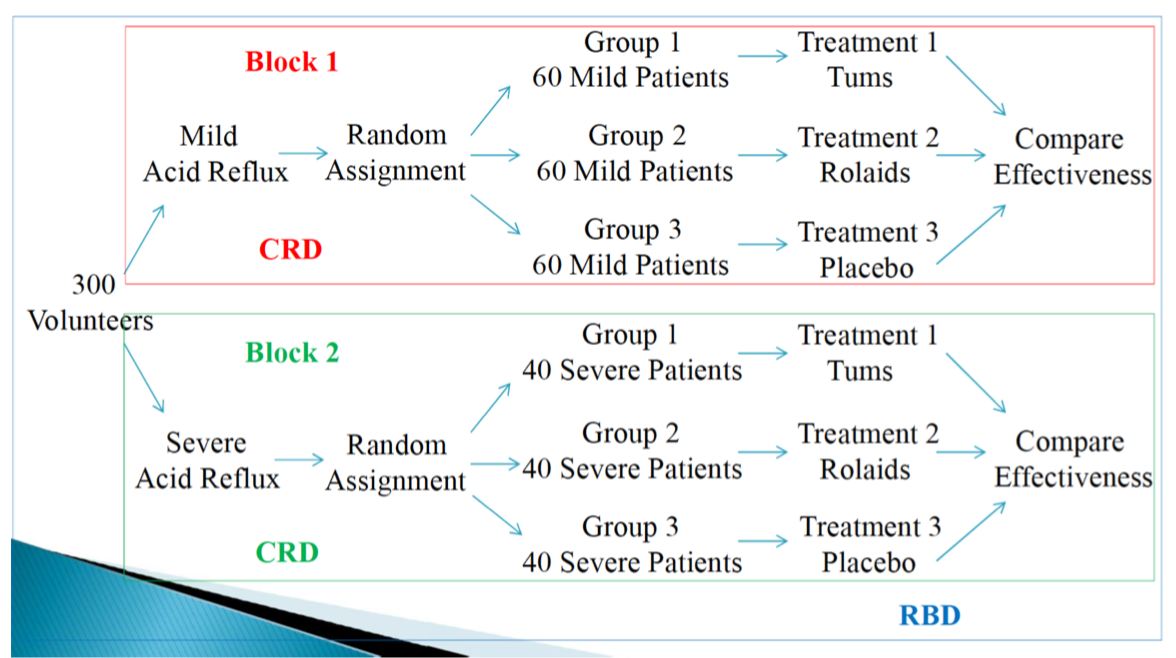Class 10 (unit 3)
1/13
There's no tags or description
Looks like no tags are added yet.
Name | Mastery | Learn | Test | Matching | Spaced |
|---|
No study sessions yet.
14 Terms
What is the simplest type of design?
CRD
Each treatment is assigned to a random sample of the available subjects.
What is blocking used for
We can attempt to further ensure the exclusion of the effect of lurking variables by using another form of contro
Block
Is a group of experimental units or subjects that are similar in ways that are expected to a!ect the response to the treatments.
Randomized block design
the random assignment of treatments to units is carried out separately within each block

Example of Randomized Block Design
There are three forms of control used here:
The blocks
blocking variable
There are three forms of control used here: (Example RBD)
Comparing responses to several treatments
Blocking ensures that some of each type of patient (i.e. moderate and severe) is getting each tablet.
The control group
Blocks (example RBD)
moderate acid reflux and severe acid reflux
actual groups: they correspond to the values of the blocking variable
Blocking variable (example RBD)
severity of acid reflux disease
Is the variable used to separate individuals into groups
Randomized block design (chart)

Are the blocks formed at random? (RBD)
not formed randomly. We purposefully divide the volunteers into mild and severe groups prior to the experiment, because we anticipated they would respond di!erently to the di!erent tablets.
What is RBD composed of
actually composed of two or more CRD’s, carried out separately within each block

In this example why was a control group added
The researcher wanted to compare the two antacid tablets, and to determine if either of them was better than a placebo.
Why would a researcher not want to add a control group
If the researcher instead simply wanted to know which of the tablets was better, it would not be necessary to include a control group. The control in such an experiment would come from the comparison between the two treatment groups.
Experimental design (Summary)
A good experiment uses the three principles of randomization, replication, and control . When an experiment is conducted properly, we avoid confounding, and are able to establish causation
Units should be allocated to treatments randomly
Replication should be used by applying each treatment to several individuals
We control the effect of possible lurking variables (as well as the placebo effect in some cases) by comparing several treatments, or by including control groups.
If some units are similar with respect to to the response variable, consider using an RBD rather than a CBD
It can be helpful to draw a diagram of the design to better explain it
If appropriate, eliminate bias by conducting a double-blind experiment